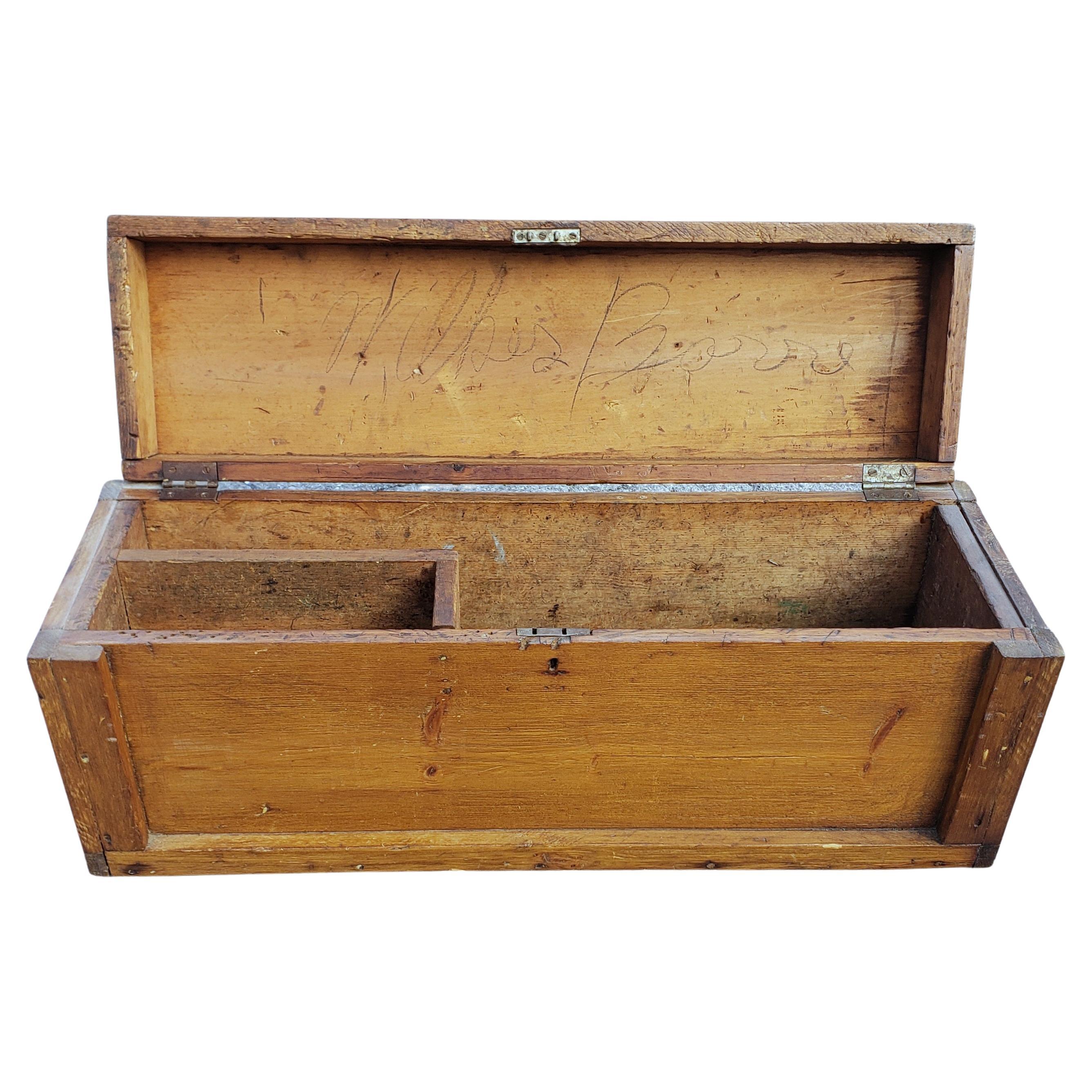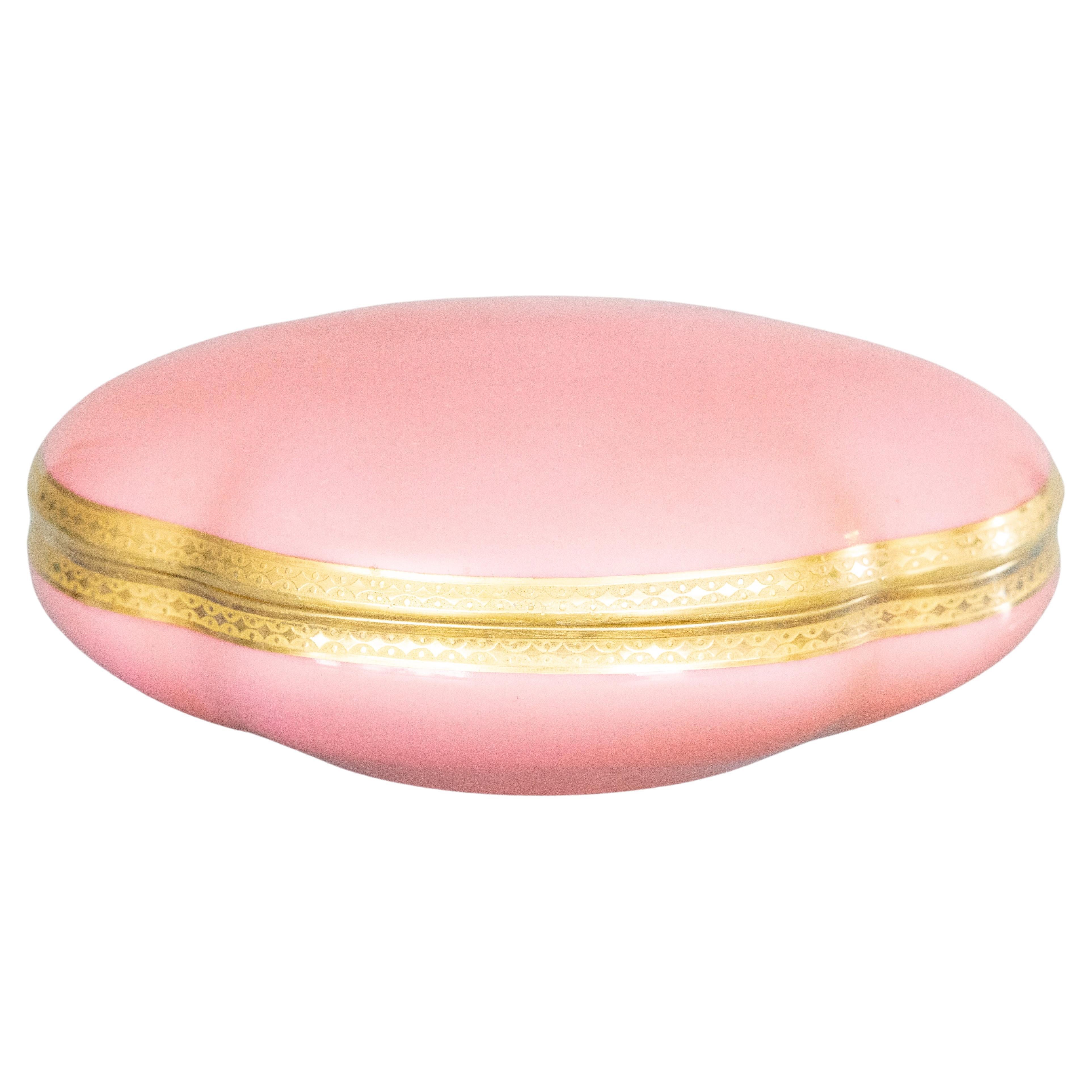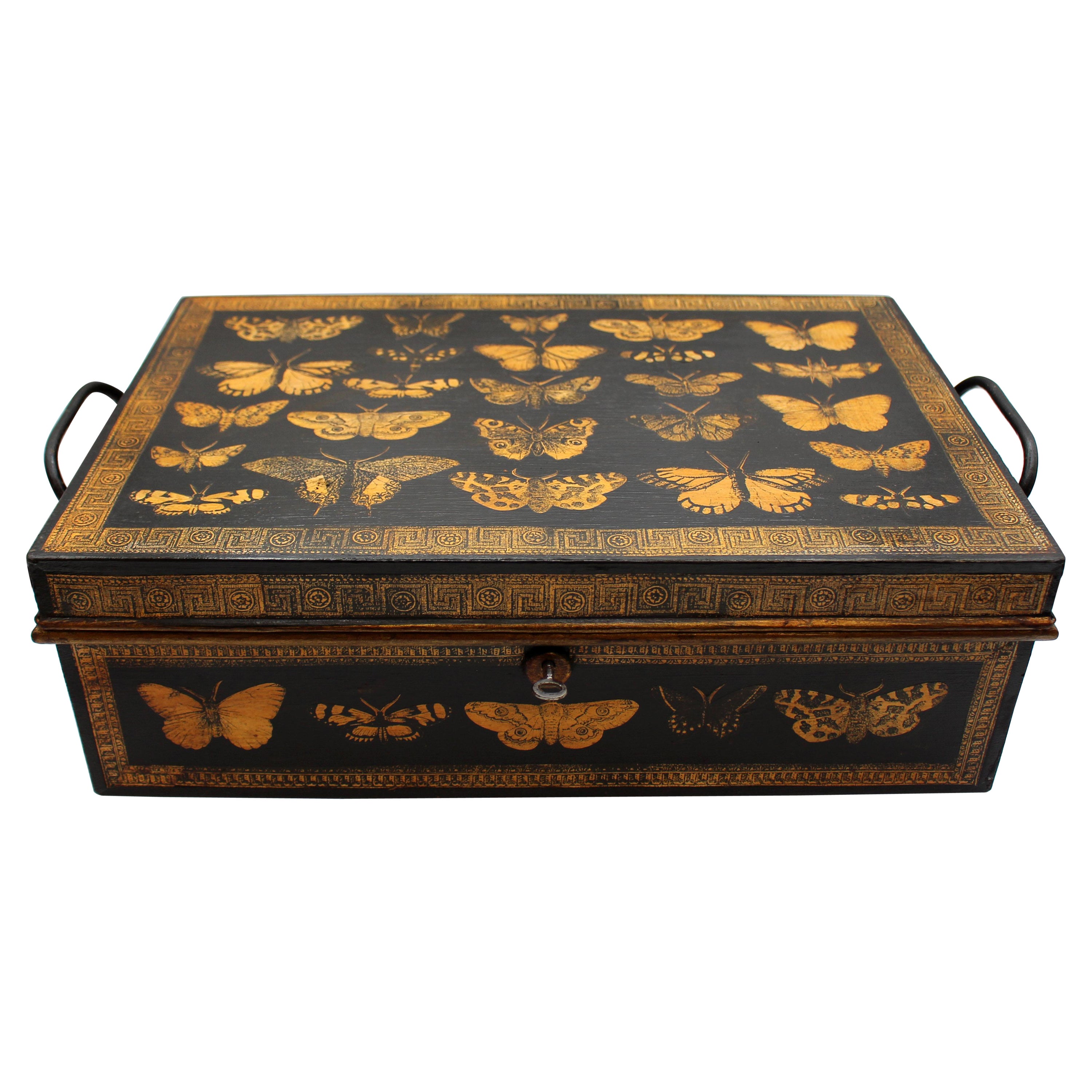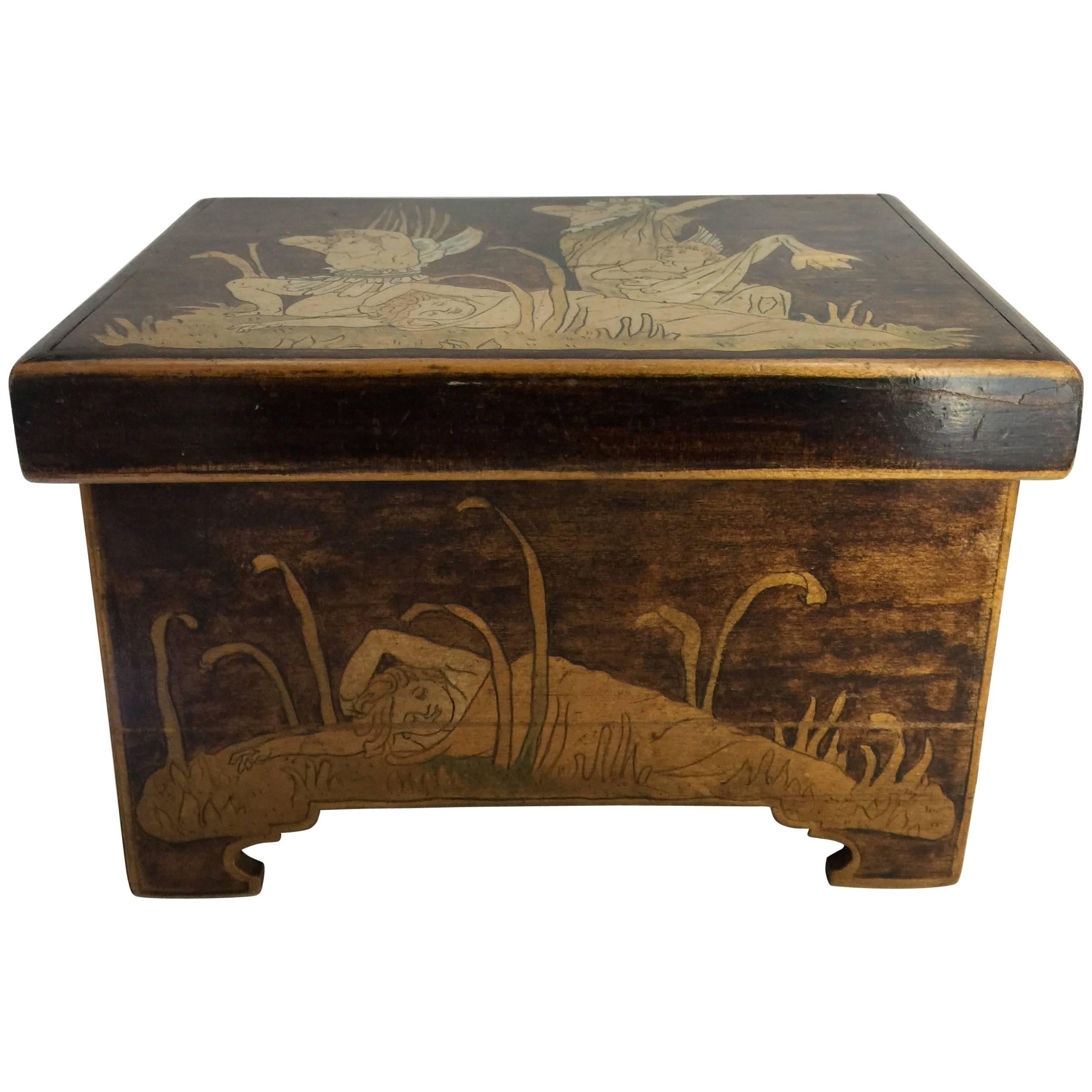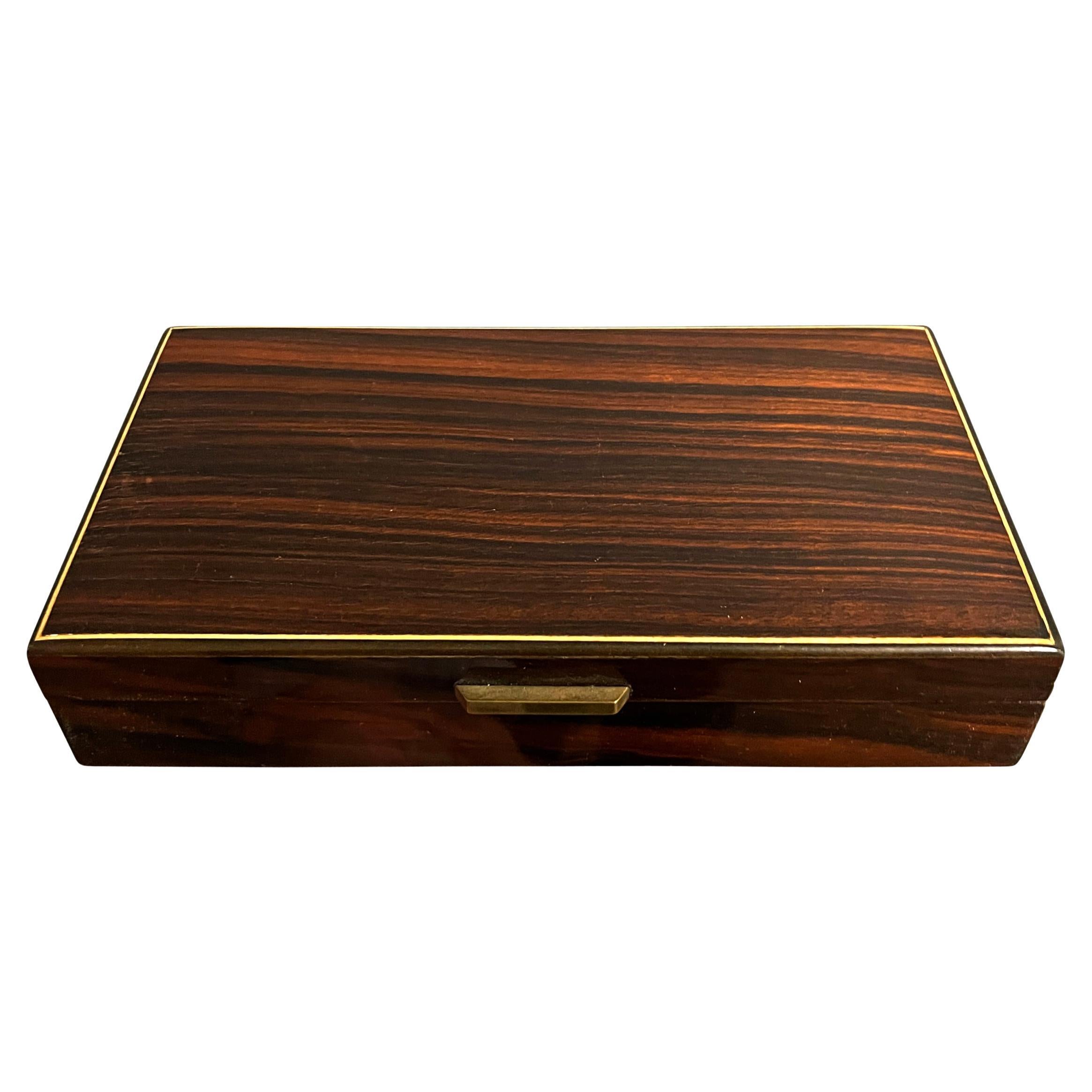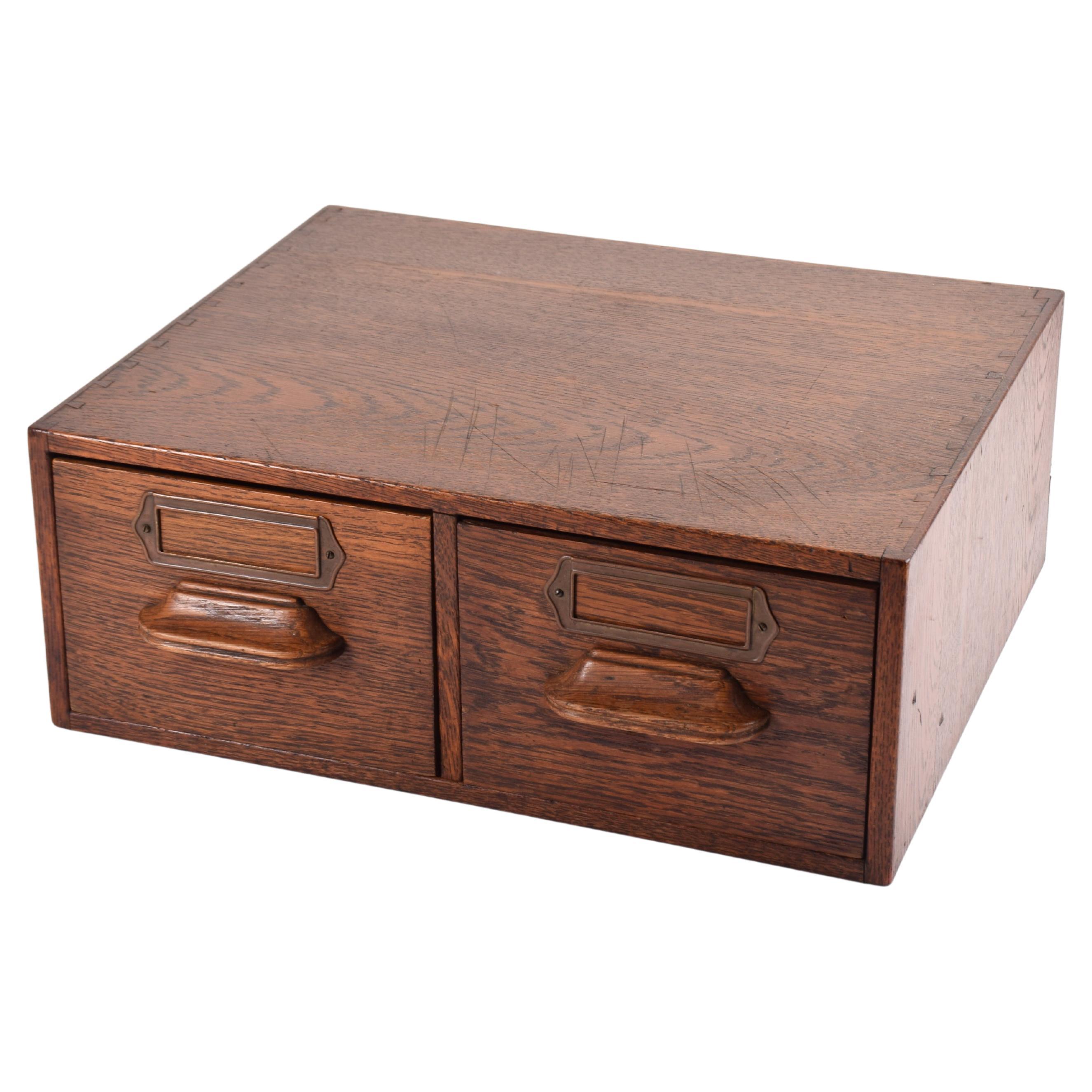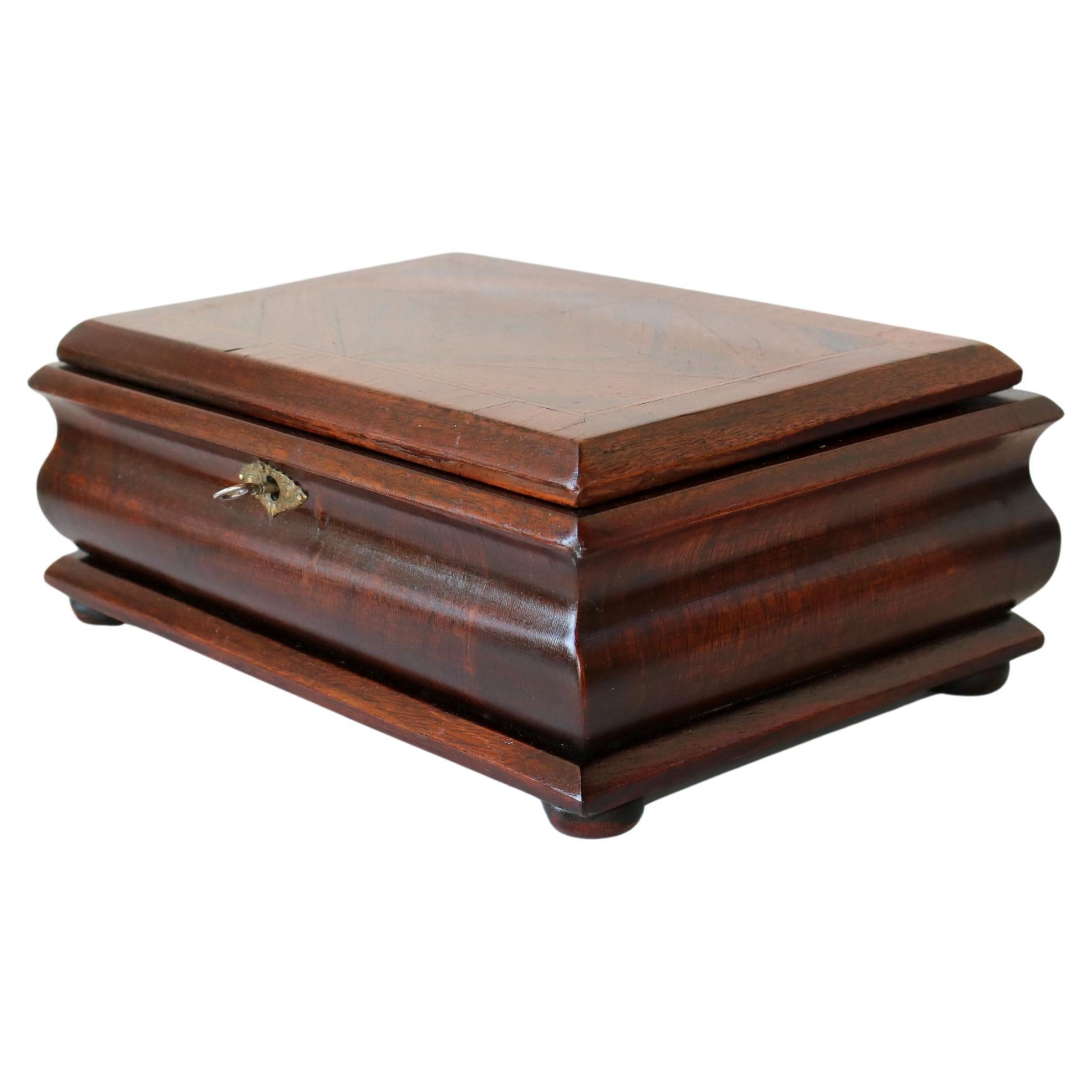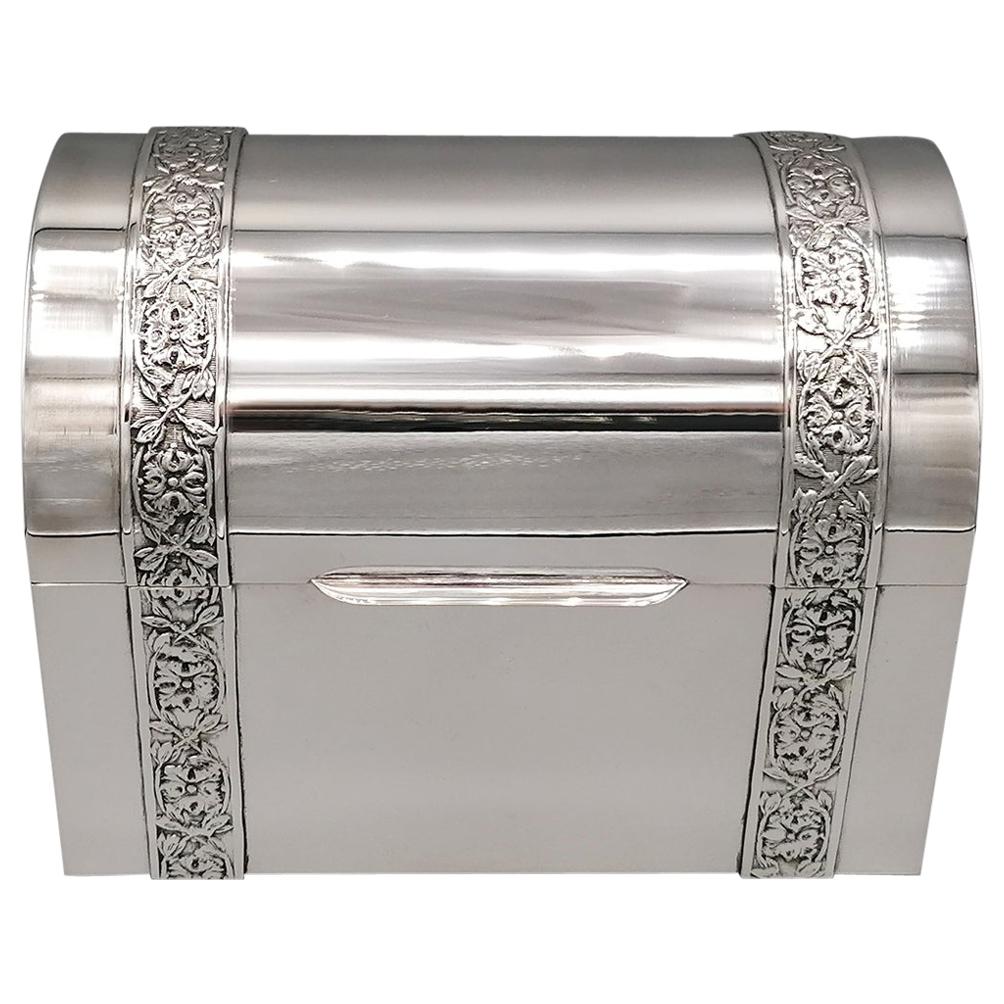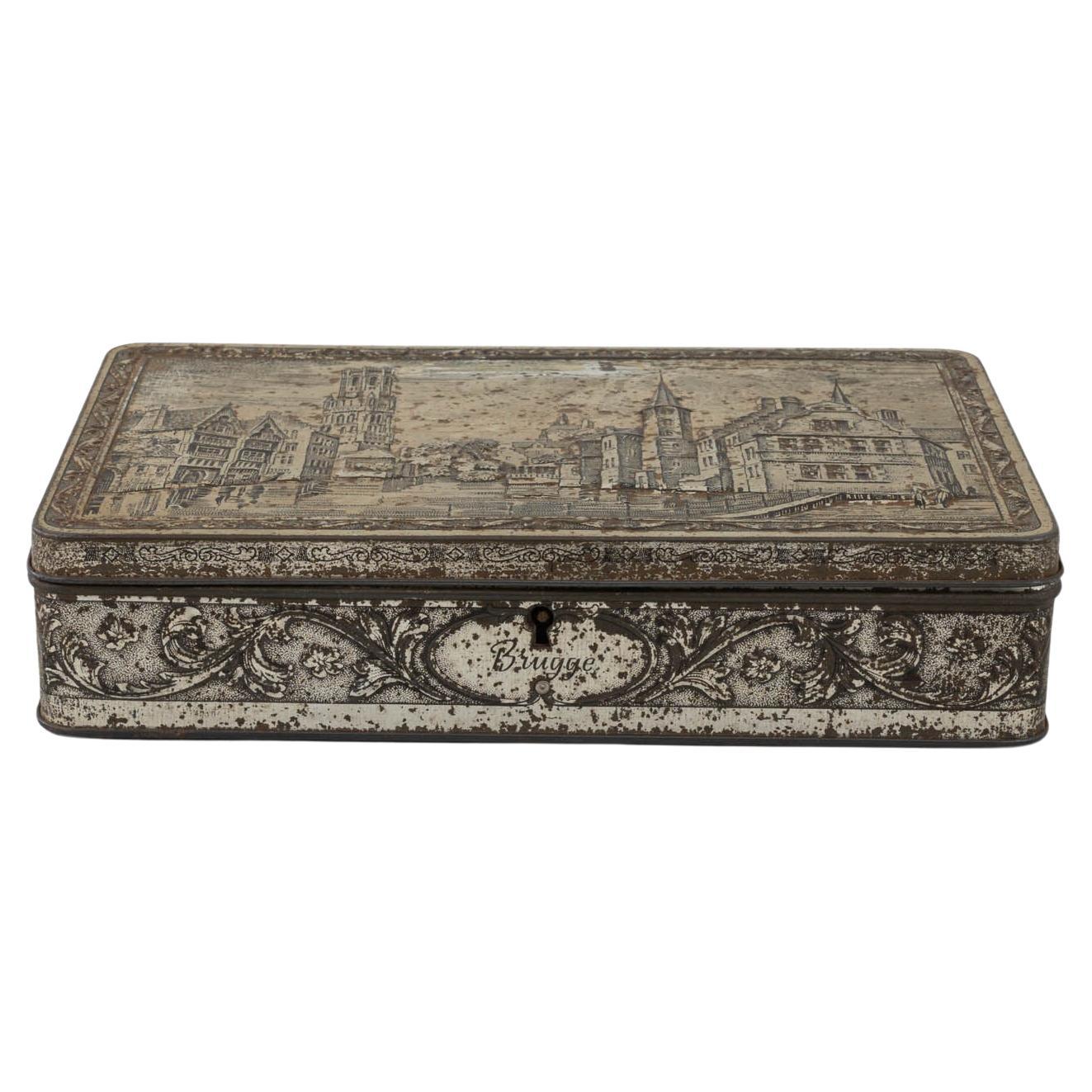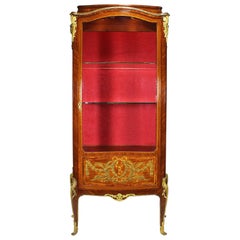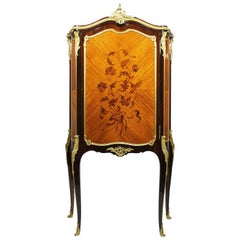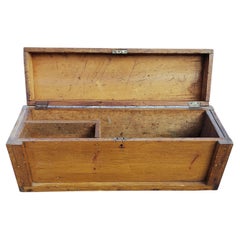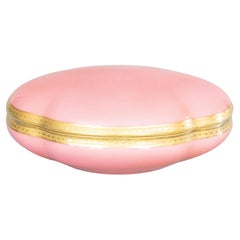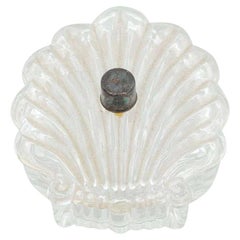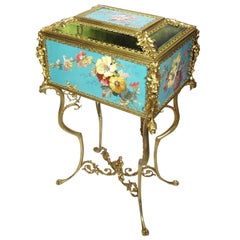
Superb Early 20th Century Aesthetic Movement Majolica & Gilt-Metal Jewelry Box
View Similar Items
Want more images or videos?
Request additional images or videos from the seller
1 of 11
Superb Early 20th Century Aesthetic Movement Majolica & Gilt-Metal Jewelry Box
About the Item
- Attributed to:Minton (Manufacturer)
- Dimensions:Height: 32 in (81.28 cm)Width: 20 in (50.8 cm)Depth: 15 in (38.1 cm)
- Style:Aesthetic Movement (In the Style Of)
- Materials and Techniques:
- Place of Origin:
- Period:1910-1919
- Date of Manufacture:circa 1920
- Condition:Wear consistent with age and use. Minor fading. Overall condition is excellent with minor wear consistent with age and use. Very minor and insignificant chipping to majolica plaques (See images). Interior green velvet lining is recent. The gilding has been restored. Very vibrant flower colors.
- Seller Location:Los Angeles, CA
- Reference Number:Seller: Ref.: A20711stDibs: LU179624036213
About the Seller
5.0
Vetted Seller
These experienced sellers undergo a comprehensive evaluation by our team of in-house experts.
Established in 1982
1stDibs seller since 2016
113 sales on 1stDibs
More From This SellerView All
- 19th-20th Century Marquetry and Gilt-Bronze Mounted, François Linke AtrributedBy François LinkeLocated in Los Angeles, CAA fine French 19th-20th century kingwood and tulipwood marquetry and gilt-bronze mounted vitrine, in the manner of François Linke (1855-1946). The slender single door display cabinet with a red-velvet backing and bowed glass panels surmounted with acanthus and floral gilt-bronze mounts in the style of Léon Messagé (French, 1842-1901), the serpentine shaped front door with an ornate marquetry and ink colored panel depicting wreaths, ribbons and tied acantus leaves, all raised on four cabriolet legs ending with gilt-bronze paw-feet, Paris, circa 1900. Linke was born on 17 June 1855 in the small village of Pankraz, in what is now the Czech Republic. Records show that Linke served an apprenticeship with the master cabinet maker, Neumann, which he completed in 1877. Linke’s work book or Arbeits-Buch records that he was in Vienna from July 1872 to October 1873 at the time of the International Exhibition held there in 1873. He subsequently travelled to Prague, Budapest & Weimar before finally arriving in Paris in 1875. It is documented that he obtained employment with an unknown German cabinetmaker in Paris, and stylistic similarities, photographs and geographical proximity have led some to suggest that Emmanuel Zwiener was the most likely candidate. After a period back in his home town of Pankratz, he returned once and for all to Paris in 1877. In 1878 Paris hosted the third great International Exhibition, a remarkable success for a country ravaged by war only seven years earlier. It is known that the fledgling Linke workshops were active in the Faubourg St. Antoine as early as 1881, during this time he supplied furniture for other more established makers such as Jansen and Krieger. By 1889 another World’s Fair, as they were often referred to in America, took place in Paris. Monsieur Eiffel erected what has become the most iconic building in Paris for the exhibition and the atmosphere of wealth and confidence may well have encouraged Linke to think that he could contribute an important part to the next great exhibition. As early as 1892 this was decreed to take place at the end of the century, in an attempt to pre-empt Berlin from staging the last great show of the century. In 1892, Victor Champier (fr) one of the commissioners for the 1900 Paris Fair had appealed, “Create in the manner of the masters, do not copy what they have made”. It was an appeal against mere reproduction and Linke rose to this challenge in an unparalleled way with his unique display that was to include the Grand Bureau. Determined to outshine the competition at the Exhibition, Linke had set about creating the most ambitious pieces he could envisage, and more extravagant than had ever been displayed before. The items he exhibited marked a transition from the historicist interpretation of Louis XV and Louis XVI styles, an interpretation that was the mainstay of his nearest rivals, to something startlingly new and vital in its immediacy. [6] Together with Léon Messagé he developed a new style for the 1900 Exhibition that paid homage to the Louis XV rococo in the fluidity of its approach, but an approach fused with the lively flowing lines of the contemporary and progressive 'art nouveau'. The Art Journal reported in 1900 on Linke's stand: "The work of M. Linke ... was an example of what can be done by seeking inspiration amongst the classic examples of Louis XV and XVI without in any great sense copying these great works. M. Linke's work was original in the true sense of the word, and as such commended itself to the intelligent seeker after the really artistic things of the Exhibition. Wonderful talent was employed in producing the magnificent pieces of furniture displayed". Linke's stand would have appeared refreshingly new to contemporary onlookers, the traditional designs of the eighteenth century melting seamlessly into an exuberant naturalism. The 'Revue' described Linke's style as 'entièrement nouveaux' and noted "This opinion is universally accepted. Linke's stand is the biggest show in the history of art furniture in the year 1900". It is perhaps the most extraordinary and remarkable aspect of Linke’s personal history that he produced such expensive and luxurious furniture of exquisite quality for the 1900 exhibition without any commission or any potential buyer in mind. [9] At a time when other more established furniture businesses such as those of Beurdeley and Dasson were closing down, he made a huge investment in his stand and the furniture he supplied for it. Linke recognised that to move his business forward he needed to appeal to a more International clientele and the new emerging rich who were at this time amassing fortunes on an unprecedented scale. For this reason he gambled everything he had on his display for the 1900 exhibition. Had this not succeeded he would almost certainly have succumbed to bankruptcy. Linke’s notebook records visitors to his stand from England, Europe, the Americas, Egypt and Japan and including; the King of Sweden, three visits from the King of Belgium, Prince Radziwill, the Prince d’Arenberg, the Comte Alberic du Chastel, Miss Anna May Gould, the American heiress, distinguished furniture makers and the President of France Emile Loubet. This risky endeavour was a resounding success, and with his reputation established, La Maison Linke became the pre-eminent furniture house until outset of the Second World War. The technical brilliance of his work and the artistic change that it represented was never to be repeated. His showrooms expanded into prestigious premises in Paris, in the Place Vendôme as well as the Faubourg St. Antoine where his workshop had been established. He embarked on many important commissions in the years up to the outbreak of the First World War, making and designing furniture for leading international industrialists and bankers. After the 1914-1918 World War, Linke undertook the extraordinary commission to furnish the Ras al-Tin Palace in Alexandria for King Fuad of Egypt, possibly the largest single furniture commission ever conceived, eclipsing even Versailles. Linke flourished and remained active until the middle years of the 1930s and died in 1946 Léon Messagé (1842-1901) was a French sculptor, best known for his sculptural collaboration with François Linke for the 1900 Paris Exposition Universelle. Messagé was also responsible for much of the design and creative work for Roux et Brunet...Category
Antique Early 1900s French Louis XV Vitrines
MaterialsBronze
$18,950 Sale Price44% Off - French 19th-20th Century Louis XV Style Gilt-Bronze Mounted & Marquetry CabinetBy François LinkeLocated in Los Angeles, CAA fine French 19th-20th century Louis XV Style gilt bronze-mounted, Mahogany and Tulipwood Marquetry Side Cabinet/Secretaire in the style of François Linke (1855-1946). The slender s...Category
Antique Early 1900s French Louis XV Cabinets
MaterialsBronze, Ormolu
- French 19th-20th Century Louis XV Style Tulipwood & Gilt-Bronze Mounted CabinetLocated in Los Angeles, CAA French 19th-20th century Louis XV style tulipwood parquetry and mahogany gilt-bronze mounted three-door Meuble d' Appui (Side cabinet) with marble top, Paris, circa 1900. Measur...Category
Antique Early 1900s French Louis XV Cabinets
MaterialsBronze
$9,850 Sale Price23% Off - French, 19th-20th Century Louis XV Style Gilt Bronze-Mounted Vitrine by HaentgesBy Haentges FreresLocated in Los Angeles, CAA fine French, 19th-20th century Louis XV style mahogany and gilt bronze-mounted Vitrine by Haentges Freres. The single door cabinet surmounted with or...Category
Antique Early 1900s French Louis XV Vitrines
MaterialsBronze, Ormolu
$9,450 Sale Price52% Off - Early 20th Century Gilt-Metal and Glass "Versailles" Style Hanging LanternLocated in Los Angeles, CAA French early 20th century gilt-metal paneled beveled glass "Versailles" style hanging twin-light lantern. The elongated body topped with a crown-shaped design among floral shields....Category
Antique Early 1900s French Louis XIV Lanterns
MaterialsMetal
$4,850 Sale Price30% Off - French 19th-20th Century Louis XVI Style Mahogany, Kingwood Parquetry VitrineBy François LinkeLocated in Los Angeles, CAA very fine French 19th/20th century Louis XVI style mahogany, kingwood and tulipwood parquetry three-door vitrine with ormolu-mounted floral wreaths, ribbons, female masks and centr...Category
Antique Early 1900s French Louis XVI Vitrines
MaterialsMarble, Bronze
$37,950 Sale Price20% Off
You May Also Like
- Early 20th Century American Primitive Wooden Tool BoxLocated in Germantown, MDEarly 20th century American Primitive wooden tool box measuring 33" in width, 11" in depth and 14" in height.Category
Early 20th Century American American Colonial Decorative Boxes
MaterialsHardwood, Pine
$1,046 Sale Price25% Off - Early 20th Century French Limoges Pink Gilt Porcelain Jewelry BoxBy LimogesLocated in Pearland, TXA stunning antique French pink porcelain lidded jewelry box by Theodore Haviland, Limoges, France, circa 1900-1920. Maker's mark on reverse. This gorgeous box has a stylish serpentin...Category
Early 20th Century French Art Deco Jewelry Boxes
MaterialsPorcelain
- Early 20th Century Shell Crystal Jewelry BoxLocated in Barcelona, BarcelonaShell crystal jewelry box. By unknown manufacturer from France, early 20th century. In original condition, with minor wear consistent with ag...Category
Early 20th Century French Other Jewelry Boxes
MaterialsGlass
- Italian Jewelry or Decorative Box, Early 20th CenturyLocated in Haddonfield, NJEarly 20th Century Italian jewelry box. This sweet petite box is a perfect piece to hold jewelry or any small collectibles. Sitting atop a vanity, dresser or a desk, the hand painted...Category
Early 20th Century Italian Folk Art Jewelry Boxes
MaterialsWood
- Early 20th Century Decoupaged English Metal Lock BoxLocated in Chapel Hill, NCEarly 20th century metal lock box now decoupaged with butterfly decoration, English. Bramah lock with original key. Swing handles. Decoupaged Greek key ...Category
Early 20th Century British Art Deco Decorative Boxes
MaterialsMetal
- Aesthetic Movement Trinket Box, circa 1900Located in Spencertown, NYThe box with scenes of lilliputian figuresCategory
Early 20th Century English Aesthetic Movement Decorative Boxes
MaterialsWood
$1,600 Sale Price20% Off
Recently Viewed
View AllMore Ways To Browse
Minton Aesthetic
Minton Aesthetic Movement
Butterfly Box Green
Minton Figure
Beveled Glass Jewelry Box
Antique Beveled Glass Jewelry Box
Majolica Insect
Pink Azaleas
Minton Butterfly
Antique Azaleas
Jewelry Jewelry Casket
Jewlery Casket
Jewelry Casket
Antique Porcelain Jewelry
Antique Walnut Jewelry Box
Ring With Tassels
Brass Inlay Jewelry Box
Modern Wood Jewelry Box

